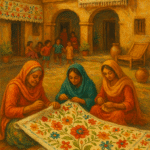Maya’s Story and the Fight for Trans Rights in India
Introduction: Maya’s Transgender Journey in India
Reading about Maya, a young woman in her early twenties, instantly struck a chord. As part of my research on transgender life narratives, I began our interaction with a formal questionnaire. But as Maya began to speak, her story poured out in a way that demanded listening, not interruption. What started as a research interview soon became a deeply personal connection. Her story—a tapestry of abuse, abjection, discovery, and courage—is not uncommon in India, but the strength in her voice made it unforgettable.
Early Life and Abuse: A Childhood of Misdirection
Born male but identifying as female, Maya faced rejection early. School was a battleground, where classmates and even teachers bullied her daily. Institutional spaces lacked both sensitivity and support. At home, things were no better—her parents remained unaware and unresponsive to her suffering. Eventually, she dropped out of school, forced into labor-intensive work environments dominated by men, where her gender identity clashed with expectations.
Within her home, her feminine expression led to further alienation. Physical and emotional abuse escalated until she filed a police complaint—one that was taken lightly and never acted upon. These early experiences carved deep wounds but also sowed the seeds of resilience.
Search for Identity: Running Away and Self-Discovery
In 2021, Maya fled to Delhi, seeking refuge. She lacked language to explain her feelings; no one around her could offer clarity. Her understanding of self came only after connecting with an LGBTQIA+ NGO. Through them, she learned the term “transgender,” giving shape and validation to the identity she had always felt but couldn’t articulate. This moment of recognition became her turning point.
A Voice of Advocacy: Returning with Purpose
After living in a government shelter dedicated to transgender individuals, Maya returned to her hometown. Despite living alone and struggling to find employment, she emerged as a voice for others in the community. Her strength and visibility earned her recognition as a state icon for LGBTQIA+ rights.
Maya’s transgender journey in India is emblematic of many, but her transformation into an advocate gives her narrative a unique urgency. She represents not just a survivor, but a changemaker.
Demands for Change: Education and Representation
Maya strongly advocates for the inclusion of gender studies in school syllabi. She believes this will foster understanding from a young age and prevent future trans individuals from facing the ignorance she did. Education, she argues, can lead to empathy.
Additionally, she highlights the need for trans voices in policy decisions. Many legal frameworks include women but exclude transgender perspectives. True inclusivity, she insists, requires that trans individuals be present where policies are crafted.
Conclusion: Learning from Maya’s Journey
Maya’s transgender journey in India is more than a personal narrative—it is a reflection of a society that still struggles to accept difference. Her story emphasizes the urgent need for awareness, compassion, and systemic reform. By listening, learning, and advocating for inclusive spaces, we can begin to dismantle the barriers that limit lives like Maya’s.
Internal Links:
- Why Gender Studies Should be Included in the School Curriculum
- The Gender Spectrum: Voices from India’s Transgender Community
Support Resources:
- Naz Foundation: NGO supporting LGBTQIA+ rights in India
- Humsafar Trust: Community-based organization working with LGBTQ individuals
- Transgender Welfare Board (India): Government initiative for transgender welfare


